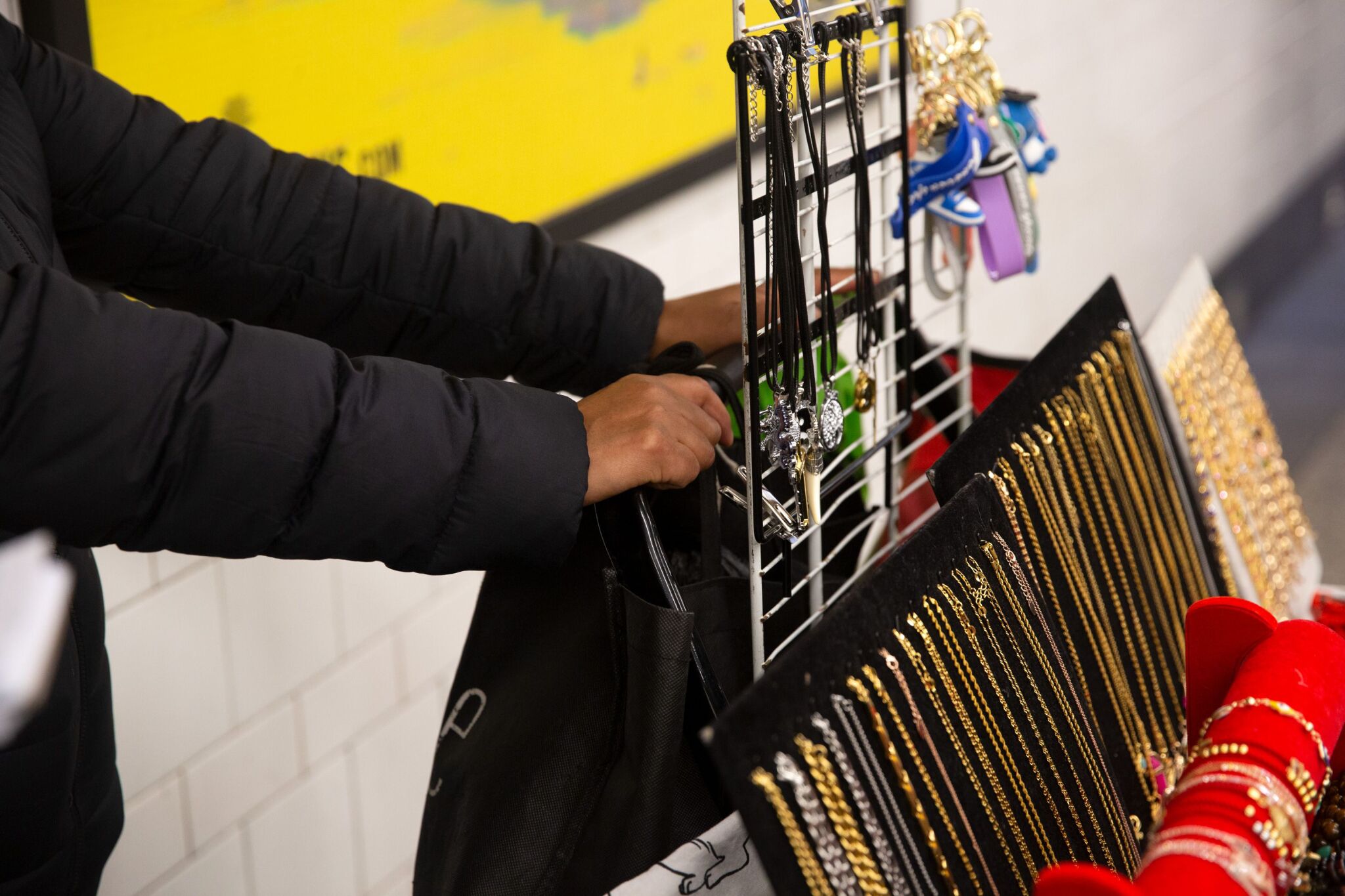Yves here. This is all so sad. The cost of having lots of migrants compete for jobs at the bottom is more desperation, pressure on cheap housing, too often homelessness and disease….and for what? The PMC wanting cheap servants and businesses like meatpackers, laborers who will accept terrible condition? The Feds not wanting to devote the effort and resources to better solutions to a thorny problem? The only clear winners seem to be the traffickers.
This article describes how New York City subways, which have become a place for migrants to try to earn a living selling food and trinkets (due to lack of enforcement) is now seeing more competition due to an influx of arrivals. Most Americans are in denial of how third-worldy our yawning income gap has made us.
By Jose Martinez. Originally published at THE CITY
As evening-rush commuters zipped through the 42nd Street subway passageway that links the Times Square and Port Authority stations last week, a mother of four young sons gently tried making her voice heard inside the city’s busiest transit complex.
“Chicles, chocolates, galletas,” she said repeatedly in Spanish, clutching a small cardboard box with $2 packs of chewing gum, M&Ms and Oreos, as three of her boys sat on the floor crowding around the screen of a mobile phone.
Two months after arriving in the United States via the Mexican border town of Piedras Negras, the 35-year-old Ecuadorian woman — who did not want to be identified by name — told THE CITY that she has followed the path into the subway of other newly arrived asylum seekers from Central and South America who try to make a few dollars by selling sweets and fruits.
Initially, she’d struggled to land cleaning jobs alongside day laborers at a street-corner “parada.”
“The jobs there are not enough, you get maybe one or two days of work in an entire week,” she said. “You can’t survive in this country with two days of work.”
So she turned to the transit system to peddle snacks.
With her child in a stroller, Rosa Perez sold fruit at the Barclays Center station after emigrating from Ecuador, May 18, 2023.Ben Fractenberg/THE CITY
More than 67,000 asylum-seekers have arrived in New York City since last year, according to City Hall, with the majority coming from countries in Central and South America.
Some of them are migrants shipped on buses to the Port Authority Bus Terminal in Midtown by Texas Gov. Greg Abbott.
In the last week alone, 5,800 asylum seekers have arrived in New York, Mayor Eric Adams said Monday, with many arriving by plane at JFK and LaGuardia airports. An unknown number are now setting up shop in the subway.
“You don’t have to make a huge investment,” said Hildalyn Colon, deputy director of New Immigrant Community Empowerment, a Queens-based organization that provides job training and other help for the newly arrived. “You buy a package of candy and sell it.”
The city has been bracing for a significant influx of people crossing the southern border following the expiration earlier this month of emergency order Title 42, a federal pandemic measure that barred many migrants from coming into the U.S. in pursuit of asylum.
While train stations have long been a draw for immigrants who sell food in the subway without authorization — a practice prohibited by the New York City Transit Rules of Conduct — advocates for the newly arrived told THE CITY that the ongoing migrant crisis has increased the number of people peddling things there.
“The subway is a last resort for a lot of people because of their circumstances,” Colon said. “They may be people who never qualify for asylum, but what you will see in common is that they all have to feed their families.”
Among them are mothers with infants strapped to their backs and, in some cases, unaccompanied small children selling candy in the subway.
“I see this kid all over,” said one veteran subway worker who sent THE CITY photos of a boy selling Welch’s Fruit Snacks at stations in Brooklyn and Manhattan.
When asked last month about sightings of children selling snacks in the subway, MTA Chairperson and CEO Janno Lieber told THE CITY that, in years past, the agency has raised the issue of youth selling candy on trains to the Administration for Children’s Services.
“They’re doing it, but they’re not necessarily collecting for the basketball team,” Lieber said. “There are large businesses that put them out there to tell a story and don’t pay them much.”
Lieber added that violations of the transit system’s rules of conduct are left to the NYPD.
A spokesperson for ACS said if New Yorkers spot a child panhandling in the subway or elsewhere and who may be in danger or need immediate assistance, they should notify the police.
According to NYPD data, one criminal court summons was issued in the first three months of 2023 for unauthorized commercial activity in the transit system, while 76 were issued for disobeying transit signs, along with 63 for violating other transit regulations.
In response to questions from THE CITY last week, MTA spokesperson Meghan Keegan did not address migrants in the subway, focusing instead on recent improvements to service reliability, increases in ridership and declines in crime.
More Competition
Longtime unlicensed subway vendors said they have also noticed the surge into the subway of the city’s newcomers.
“It used to be that there were just a few of us,” said Maria Toapan, 41, an Ecuadorian woman who said she has been selling churros and fruits in the subway for four years. “Now, this whole station is packed.
“But it’s not easy,” said Toapan, who was offering grapes and chunks of watermelon and mango at the sprawling Atlantic Avenue-Barclays Center subway hub in Brooklyn last Friday. “There is so much competition that some days you sell next to nothing.”
While there is no reliable measure of how many of the new arrivals have found their way into the subway system as vendors, several told THE CITY that working on trains and in stations gives them a better chance to make a few bucks — but also to encounter police.
“It’s the first place I found where I can make a little money,” said Maria Farinango, a 44-year-old vendor from Ecuador who arrived in the U.S. six months ago and now rents a room in Corona, Queens, with her husband. “I’m sure there are other places, but since I don’t know my way around, I come to the subway.”
Farinango, who was selling bracelets, necklaces and churros at Atlantic Avenue-Barclays Center, told THE CITY she and other vendors are regularly ordered out of the subway by police.

Maria Farinango sells jewelry at the Barclays Center station, May 18, 2023.Ben Fractenberg/THE CITY
“They say move, that I’m not allowed to be here,” she said. “So I go somewhere else for a bit, then I come right back.”
On multiple occasions last week, THE CITY saw police officers move vendors out of the sprawling Brooklyn station, only for the vendors to return within minutes.
“They clear them out and they come right back,” a station cleaner said.
Farinango said she also has to occasionally contend with customers who stiff her on the food. While she spoke with THE CITY, a man walked up to her cart, grabbed a bag of churros and left without paying.
“Not much I can do,” she said.
Colon, of New Immigrant Community Empowerment, said migrants are likely to continue turning to the subway as a place to make money.
“It’s easier, there’s always going to be someone passing through who can buy from you and it’s something they can do,” said. “They are desperate and they are looking to work.”


